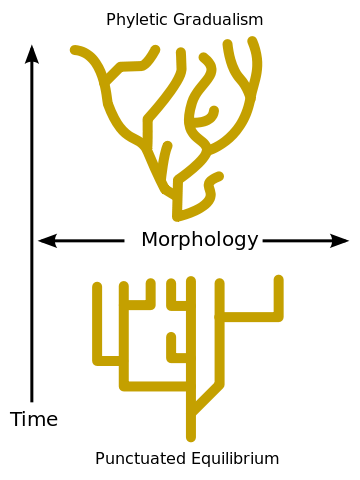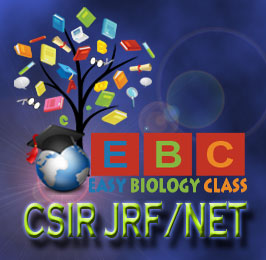CSIR/JRF/NET: Life Sciences, June 2015 (I)
COUNCIL OF SCIENTIFIC & INDUSTRIAL RESEARCH (CSIR) & UGC
(Original Question Paper)
PART: B (Questions 56 – 70)
(56). Which of the following fungal groups has septate hyphae and reproduces asexually by budding, conidia and fragmentation?
a. Basidiomycota
b. Zygomycetes
c. Chytrids
d. Glomeromycota
(57). The most commonly used molecular tool for phylogenetic analysis involves sequencing of:
a. Mitochondrial DNA
b. Mitochondrial RNA
c. Ribosomal RNA
d. Nuclear DNA
(58). The dynamics of any sub-population within a meta-population differs from that of normal population in that the:
a. Birth rates are lower than the death rates
b. Death rates are lower than the birth rates
c. Immigration and emigration rates are significantly higher
d. Immigration and emigration rates are negligible
(59). Which of the following is NOT semelparous?
a. Dracena
b. Bamboo
c. Cicada
d. Mayfly
(60). The general relation between generation time (T) and population growth rate (R) is described by the equation
a. lnr = lna – blnT
b. R = a – bT
c. lnr – lna + b lnT
d. r = a + bT
(61). Which of the following is likely to contribute to the stability of an ecosystem?
a. High number of specialists
b. Fewer number of functional links
c. More omnivores
d. Linear rather than reticulate food webs

Punctured Equilibrium Vs Phyletic Gradualism (source wikipedia)
(62). In eusocial insects, male develop from unfertilized eggs while females develop from fertilized eggs. The ultimate consequence of this difference is that:
a. In any colony there are always more males than females
b. A female is genetically more closely related to her sister than to her own offspring
c. Females are behaviorally more dominant than the males
d. In any colony there are always more females than males
(63). An extraordinary sensory ability that elephants possess is:
a. Emission and detection of ultra-high frequency sounds
b. Emission and detection of ultra-low frequency sounds
c. Detection of change in earth magnetic field
d. Possession of ultraviolet vision
(64). According to which evolutionary theory, there are long periods without significant evolutionary changes interrupted by short episodes of rapid evolution?
a. Punctured equilibrium
b. Saltation
c. Mutation
d. Neutrality
(65). The mean (μ) and standard deviation (σ) of body size in a Drosophila population are 8.5 and 2.2mm, respectively. Under natural selection over many generation the μ and σ of the body size change to 8.5 and 0.8 mm, respectively. The type of natural selection responsible for the change is called:
a. Directional
b. Neutral
c. Disruptive
d. Stabilizing
(66). A researcher would like to monitor changes in the level of a serum protein for which an antibody is available. Which one of the following methods would be best suited for the purpose?
a. Immunofluorescence microscopy
b. Fluorescence in-situ hybridization
c. Enzyme linked immunosorbent assay
d. Fluorescence activated cell sorting
(67). Which one of the methods listed below is the most sensitive label-free quantification method for proteins?
a. UV spectroscopy
b. Infra-red spectroscopy
c. Raman spectroscopy
d. 13C content of protein
(68). What will happen if DNA is labeled by nick translation while doing DNA foot-printing?
a. Nick translation will facilitate better analysis because entire DNA will be labeled and proteins binding at any region of DNA can be demarcated with precision
b. This will allow arranging the DNA fragment in the desired order
c. Labeling by random priming may be advantageous as it generates smaller fragments which can penetrate tissue easily
d. The linear order of fragments from 5’ →3’ end of DNA cannot be arranged
(69). A protein has one tryptophan and one tyrosine in its sequence. Assume molar extinction coefficients at 280 nm of tryptophan and tyrosine as 3000 and 1500 M-1cm-1, respectively. What would be the molar concentration of that protein if its absorption at 280 nm is 0.90?
a. 2 mM
b. 0.4 mM
c. 0.2 mM
d. 0.02 mM
(70). Two groups (control, treated) are to be compared to test the effect of a treatment. Since individual variability is high in both groups, the appropriate statistical test to use is:
a. Analysis of variance
b. Kendall’s test
c. Student’s t-test
d. Mann-Whitney U-test
Answer Key with Detailed Explanations:
56. Ans. (a). Basidiomycota
Members of Ascomycota, Basidiomycota and Deuteromycota have branched septate mycelium. Ascomycota and Deuteromycota members are with simple septum. The septum of Basidiomycota is special type called Dolipore septum. Dolipore septum has septal pore over arched by septal pore-cap called parenthesome. Parenthesome restrict the movement of larger cellular organelles through the septal pores.
Zygomycota: have coenocytic aseptate mycelium
Glomeromycota: members of Glomeromycota forms Arbuscular mycorrhiza with the roots of land plants.
57. Ans. (c). Ribosomal RNA
Molecular phylogeny is the modern branch of phylogeny where data from genetic information (sequence of DNA, RNA and protein) are used to construct classification systems and also to narrate evolutionary relationships between organisms. The three-domain system of classification of organisms proposed by Carl Woese (1977) which divides all life forms into three domains namely Bacteria, Archaea and Eukaryota is based on the sequence variation of 16S/18S rRNA molecule. 16S rRNA in the case of prokaryotes and 18S rRNA in the case of eukaryotes is considered as the best candidate gene for phylogenetic studies. They are of course the most extensively used molecular marker for the phylogenetic reconstruction.
Other candidate genes:
In animals: cyt c (Cytochorome C)
In Plants: rbcL (RuBisCO large subunit gene coded by chloroplast genome), matK (Maturase K, another gene coded by plastid genome in plants)
58. Ans. (c). Immigration and emigration rates are significantly higher
Meta-population: Populations of same species but the groups are spatially separated. The concept of meta-population was proposed by Richard Levins. Nowadays the concept of meta-population is widely used to describe artificially fragmented habitats. Each small population in the meta-population is called sub-populations. Different population dynamics varies greatly between the sub-population and meta-population of a population. Among these population dynamics, the immigration and emigration rates between sub-population will be more since there is only a narrow boundary between the sub-populations.
59. Ans. (a). Dracena
Semelparity: a reproductive strategy of organism in which the organism is characterized by single reproductive cycle before death. They are also called as monocarpic organisms. Pacific salmon fish is the most cited classical textbook reference for semelparity. Other examples of semelparity are bamboo, Cicada, Mayfly etc.
The opposite term for semelparity is iteroparity
Iteroparity: organism with multiple reproductive cycles over the course of the lifetime. It is also called polycarpy. Example: human, rat, coconut, mango etc.
Semelparity is a characteristic of r selected species whereas iteroparity is a characteristic of K selected species.
60. Ans. (a). lnr = lna – blnT
61. Ans. (c). More omnivores
62. Ans. (b). A female is genetically more closely related to her sister than to her own offspring
Since females are developed from unfertilized eggs, they are haploids and possess a single copy of genome. When we compare the genome of female fly with that of another female fly in the colony they shows almost similar genome since all are derived from a single mother. Offsprings can be produced only after sexual reproduction and they will be offsprings will be diploid and hence they possess a copy of genome from male parent and a copy from female parent.
63. Ans. (b). Emission and detection of ultra-low frequency sounds
64. Ans. (a). Punctured equilibrium
Punctured equilibrium: It is a type of evolution proposed by Niles Eldredge and Stephen Jay Gould (1972) in which there are long periods of equilibrium (no evolutionary changes) which is suddenly interrupted by a short episode of rapid evolution. The steady stage without any evolutionary changes is called stasis. The opposite term of punctured equilibrium is phyletic gradualism.
Phyletic gradualism: This theory states that evolution is gradual and occurs uniformly throughout the period. This result in gradual transformation of whole lineages called anagenesis.
Saltation: An evolutionary hypothesis of sudden and drastic change within a short period of time (usually a generation time).
Mutation: Sudden heritable changes occurs in the genome of an organism
65. Ans. (d). Stabilizing
Natural selection: The term popularized by Charles Darwin, it is the differential survival and reproduction of individuals due to difference in phenotype. Natural selection is a prime mechanism in the process of evolution of a population.
For the process of selection to happen in a population, there should be a selection pressure in the population. The selection process may take many variations depending upon the selection pressure from the environment.
Directional selection: First proposed by Charles Darwin, a type of selection in the population where the extreme phenotype is favored over other phenotypes, causing the allele frequency to shift over time in the direction of that phenotype. In directional selection, the favourable phenotype will be fixed in the population which is independent on the genetic makeup (dominance or recessiveness of the allele is not considered).
Disruptive selection: (also called diversifying selection) a type of natural selection in the population where the extreme traits are favored, and as a result of this the population become divided into two distinct groups.
Stabilizing selection: Stabilizing selection is opposite to disruptive selection. In this type of selection, the genetic diversity of the population becomes reduced and the population mean stabilizes on a particular trait value. Stabilizing selection uses negative selection to select against extreme values of the character. Negative selection is also called as purifying selection.
66. Ans. (c). Enzyme linked immunosorbent assay
Immunofluorescence microscopy: is best suited for localization of target protein, it can also be used to study the interactions of different proteins by differential labeling, Fluorescence Resonance Energy Transfer (FRET) or Fluorescence Recovery after Photo-bleaching (FRAP).
Fluorescence in-situ hybridization (FISH) is used to detect specific DNA sequence in the chromosomes. It works by the technique that uses fluorescent probes that binds to specific parts of the chromosome with high degree of sequence complementarity.
Fluorescence Activated Cell Sorting (FACS): It is a flow cytometry method for the separation of heterogenous mixtures of cells into two or more samples based on specific light scattering characteristics of each cells.
Enzyme linked immunosorbent assay (ELISA): A test to detect specific proteins (antigens) with specific antibodies which are tagged by colour producing enzymes for detection. ELISA can be used both as a qualitative and quantitative method for specific proteins (antigens).
67. Ans. (a). UV Spctroscopy
68. Ans. (d). The linear order of fragments from 5’ →3’ end of DNA cannot be arranged
DNA foot-printing: an in vitro method to investigate the sequence specificity of DNA binding proteins. This method is used to study protein-DNA interactions.
69. Ans. (c). 0.2 mM
70. Ans. (d). Mann-Whitney U-test
Topic Wise Questions & Answers of Previous Year CSIR JRF NET Examination
More Previous Year Solved Question Papers…
CSIR JRF NET ICMR JRF DBT BET JRF GATE - BT GATE - XL GATE - EY Ph.D. Entrance K-SET (Kerala) K-SET (Karnataka) AP-SET (Andhra) TN-SET (Tamil Nadu) G-SET (Gujarat) MH-SET (Maharashtra) PSC Exams.
Lecture Notes from Easy Biology Class…
BotanyZoologyBiochemistryGeneticsCell & Molecular BiologyBiotechnologyPhysiology & EndocrinologyPlant PhysiologyMicrobiologyImmunologyEmbryologyEcologyEvolutionBiophysicsResearch MethodologyBiostatisticsChemistry for BiologistsPhysics for Biologists
Browse more in Easy Biology Class…
Lecture NotesBiology PPTsVideo TutorialsBiology MCQQuestion BankDifference betweenPractical AidsMock Tests (Online)Biology Exams
Get our Updates on CSIR NET LIFE SCIENCES in your E-mail Inbox
We will not spam your account…
Enter your e-mail address
Don’t forget to Activate your Subscription…. Please See Your E-Mail…
We provides absolutely free Online Study Materials for the CSIR JRF NET Life Sciences examination to support the enthusiastic students to qualify their dream destination. You can use our JRF NET study materials like Books to Refer, Lecture Notes, PPTs, Model Questions (MCQ), Previous Year Question Papers, Online Mock Tests etc. for your preparation. Please remember, we can only provide the material stuffs and resources, the ultimate success depends upon your dedicated preparation for the NET exam. Please go through our online resources for JRF NET Life Science Examination. Feel free to ask any doubts/clarifications.
